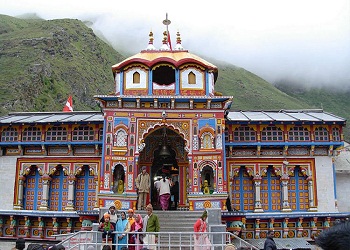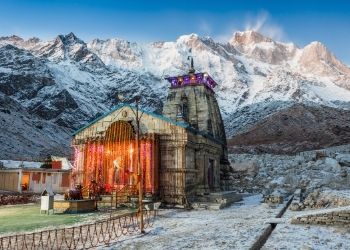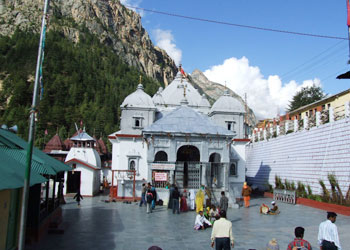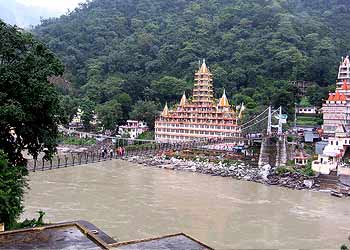Yamunotri Dham
want to know about
Yamunotri Dham
The sacred shrine of Yamunotri, source of the river Yamuna, is the westernmost shrine in the Garhwal Himalayas, perched atop a flank of Bandar Poonch Peak (3615 m) & situated opposite to Gangotri. The actual source a frozen lake of ice & glacier (Champasar glacier) located on the kalind mountain at the height of 4421 m above sea level, about 1 km further up, is not frequented generally as it is not accessible and hence the shrine has been located on the foot of the hill. The tiny Yamuna has icy cold water and its absolute innocence and the infantile purity heightens that deep feeling of reverence, Yamunoyri for the devout.
The temple of Yamuna is on the left bank of Yamuna constructed by Maharaja Pratap Shah of Tehri Garhwal. The deity is made of black marble. The Yamuna like Ganga has been elavated to the status of divine mother for the Hindus and has been held responsible for nurturing and developing the Indian civilization.
According to the legend ancient sage Asit Muni had his hermitage here. All his life, he bathed daily both in Ganga and Yamuna. Unable to go to Gangotri during his old age, a stream of Ganga appeared opposite Yamunotri for him.
Close to the temple are hot water springs gushing out from the mountain cavities. Suryakund is the most important Kund. Near the Suryakund there is a shila called Divya Shila, which is worshipped before puja is offered to the deity. Devotees prepare rice and potatoes to offer at the shrine by dipping them in these hot water springs, tied in muslin cloth. Rice so cooked is taken back home as prasadam.The pujaris of Yamunotri come from the village of Kharsali near Jankichatti. They are the administrators of the sacred place and perform religious rites well versed in Shastras.
The temple and the place opens every year on the auspicious day of the akshya-tritya, which generally falls during the last week of April, or the first week of May. The temple always closes on the sacred day of Diwali mid- Oct. - 1st week of Nov., with a brief ceremony, the temple staff return to their villages and for the rest of the time the valley is gripped in no man silence and covered with white sheet of snow. With melting of snow next summer, temple re-opens to blissful happiness of thousands of visitors again.
YAMUNOTRI TEMPLE
"The daughter of the Sun god, Surya and consciousness, Sangya the birth place of the Yamuna is the Champasar Glacier (4421 m). Just below the Banderpoonch mountain. The mountain adjacent to the river source is dedicated to her father, and is called Kalinda Parvat. Kalinda being another name of for Surya. Yamuna is known for her frivolousness, a trait that she developed because as per a common story - Yamuna's mother could never make eye contact with her dazzling husband.
Yamunotri Dham Uttarakhand
Best Time to Visit Yamunotri Temple
Due to its high altitude location, Yamunotri Dham remains open to the devotees for only a brief period of six months. The end of April or beginning of the month of May is chosen for the opening of the portals of this sacred Hindu shrine as the snow melts and the weather becomes pleasant. The temple closes right after the festival of Diwali and its deity is moved to Kharsali Village to be worshipped for next six months of winter season. Therefore, the best time to visit Yamunotri is between April and November with April to mid-June and October to mid-November being ideal most.
Yamunotri Temple Opening & Closing Dates 2025
The Yamunotri temple opens in the month of April/May at the onset of the summer season and closes for winters in the third week of November. The idol of Goddess Yamuna is then carried to Kharsali Village where the pilgrims can pay homage to the deity for 6 months.
The dates for opening date of Shri Yamunotri Temple is announced by the priests on the auspicious day of Basant Panchmi. The opening date of Yamunotri Temple this year in 2025 is decided as April 26.
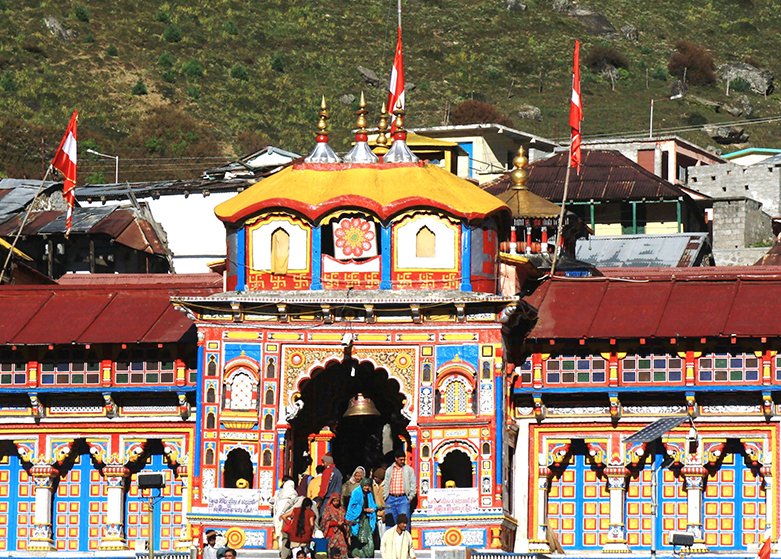
SIGHT SEEING & EXCURSION
Temple of Goddess Yamuna : The temple was built by Maharani Gularia of Jaipur in the 19th century. It was destroyed twice in the present century and rebuilt again. The temple remains closed from November to April/ May.
Surya Kund : There are a number of thermal springs in the vicinity of the temple which flows into numerous pools. The most important of these is Surya Kund is known for its very high temperature of 190° F. Pilgrim cook rice & potatoes here to offer to deity in the temple.
Divya Shila : Near Surya Kund there is a slab of stone known as Dibya Shila or the slab of divine light. This slab is worshipped before puja is offered to Yamuna.
Jankichatti : 216 km from Rishikesh, this is the last halting point en route Yamunotri. This is the place where all pilgrims have to return for the night halt, the same day because of the extremely limited accommodation options available at Yamunotri. The 6 km trek to Yamunotri from here is a steep climb & thus has to be started on early morning to return to Jankichatti for night halt, the same day. Ponies & dandies can be arranged a day before for negotiating the trek for those unable to cope with trek physically. The thermal springs here offer a spectacular sight and a refreshing bath for the pilgrims. Surroundings the place are lush valley with a profusion of confirms, rhododenrons, cacti &several species of Himalayan shurbs and one can enjoy panoramic view of the fabled snow-clad Yamunotri peaks.
Hanumanchatti : Hanumanchatti is the last motorhead on way to Yamunotri & is the hub of activities in season. It is a place of confluence of Hanuman Ganga and Yamuna rivers, from where the trek to Dodital (3,307 m) starts. The trek from Hanumanchatti starts with a gentle climb and the 7 km trek through Phoolchatti & Jankichatti is most enjoyable as the path trails its way through wooded hills & meadows shaded with beautiful green, while the fragrance of the Himalayn trees & shurbs permeate the cool mountain etc.
Lakhamandal : This is a cultural and historical trek in the Jaunsar - Babar region, at the foothills of the stately Garhwal Himalayas. The tribes here, known as Jaunsaris, practice polygamy and polyandry. Lakhamandal is a large village on the banks of Yamuna, known for its temple ruins. The ruins at Lakhamandal give an indication that in the past it must have been a major temple town. Many believe that Lakhamandal is the same Lakhshagriha described in Mahabharat.
Kaurava Prince Duryodhana had built a palace made of lac, in which he tried to burn the Pandavas alive. The villagers believe that there is a secret passage that emerges few kilometers downstream today in the center of the village there is a Temple dedicated to Bhagwati and Lord Shiva. In the temple complex stand two life size stone statues. Perhaps they are the Dwarpals of a much older temple. With the legend of Jay and Vijay, the Dwarpals at the gates of heaven. But most of the villagers believe the statues to be that of Bhima and Arjuna.
BOOK ROOM
TALK TO OUR EXPLORE EXPERT
We're here to chat about your next big idea.
- 11 am - 6 pm Monday through Saturday.
Otherwise, email us anytime. On average we provide quotes within 6 hours during business hours and the next day during off business hours.
Privately guided trips allow you to be in control of all the details of your trip - departure times, accommodations, extra nights, extra activities, extra experiences - what you want and how you want it.

